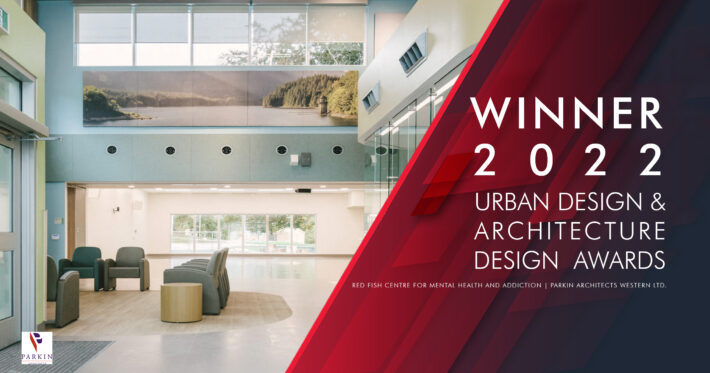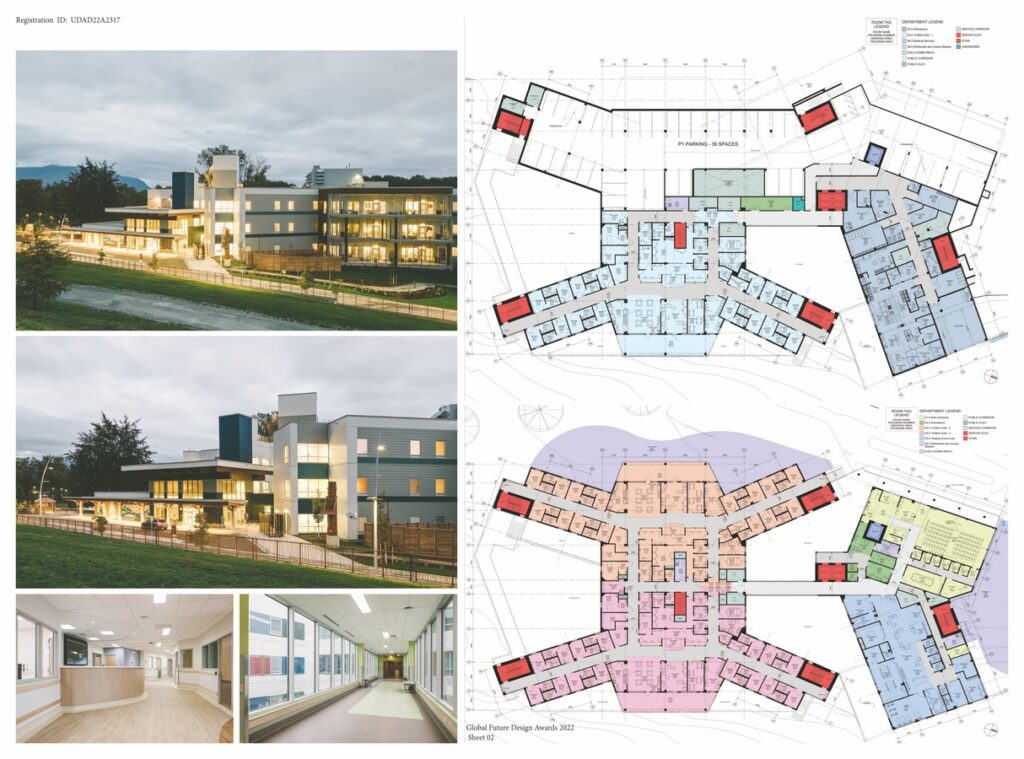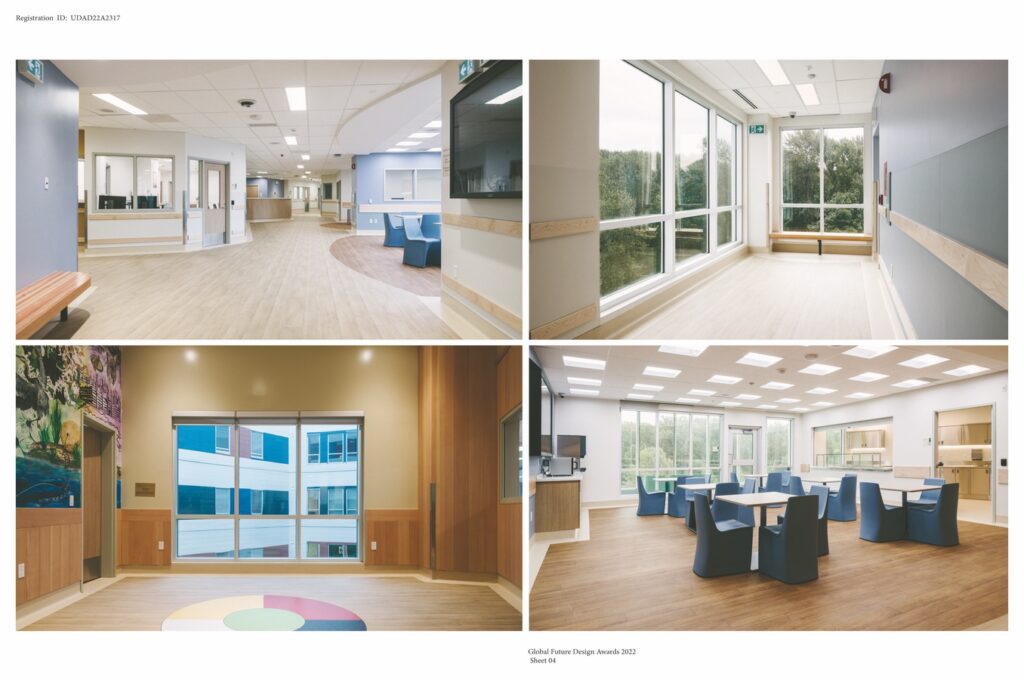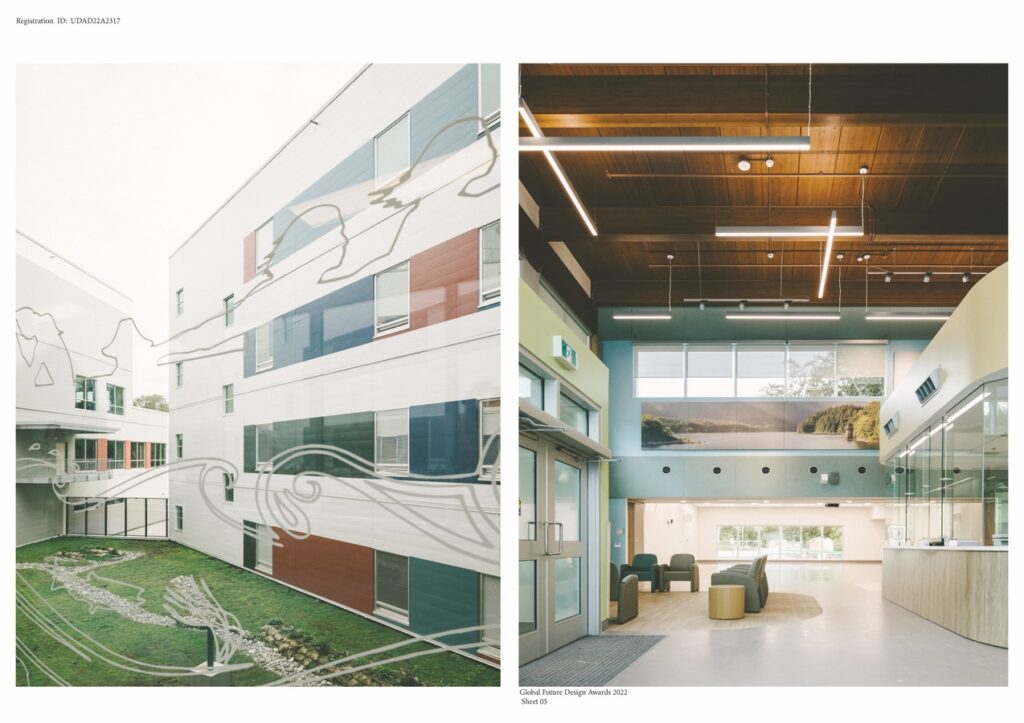The Red Fish Centre for Mental Health and Addiction is arguably the first large, standalone behavioural health centre dedicated to treating concurrent disorders of mental health and addictions. Client stays are longer than at other treatment facilities, providing more time to understand the roots of their addictions through conventional counselling and various types of therapy including music, art, and physical activities.
The Centre focuses on recovery, trauma reduction, family therapy, and First Nations culture. The modernized facility includes green spaces, natural light, and private rooms for patients and therapeutic staff. Divided into seven coed units, each having 15 private bedrooms, clients are placed according to their stages of recovery. Unique, partially operable, patient windows allow fresh air without posing personal harm. Combined features and programs allow clients to gradually transition from care back into their communities.
Urban Design & Architecture Design Awards 2023: Discounted Entries Open Now! Save $50
Super Early Discount – 1st May 2022 to 30th June 2022 – $199 = $149
Gold 🏆 Winner
Urban Design & Architecture Design Awards 2022
Red Fish Centre for Mental Health and Addiction
Future Architecture Built
Firm
Parkin Architects Western Ltd.
Architect/Designer
John MacSween
Design Team
Project Director – John MacSween, Principal Designer – Shane Czypyha, Principal Contractor – Craig Enns, EllisDon Corporation
Location
Coquitlam, British Columbia
Country
Canada
Photographer/Copyright
©Andor Geller Photography
The local Kwikwetlem First Nation contributed to the facility’s design by including indigenous murals and art, the incorporation of a room for spiritual healing activities, and the erection of a “House Post”—the first to be raised in their traditional lands in over a century, carved from a 600-year-old cedar tree. It represents an indigenous warrior who protects clients who need healing.
Each of the Centre’s bed units is designed with a centralized staff collaboration area that pairs with the adjacent bed unit’s staff area. This promotes cross-collaboration among units while keeping staff and physicians safe. Virtually enabled for telehealth, the Centre paves the way for built-in videoconferencing tools to help clients, loved ones, and care providers, province-wide. An interconnected network allows healthcare providers to perform tasks with efficiency and ease. Central collaboration areas are open-ended where the space transitions to patient care—a modern approach to behavioural health design, bringing walls down to provide maximum visibility over the large, open, multipurpose patient spaces and patient rooms.
Surrounded by approximately 1,800 mature trees, the building reflects the beautiful natural landscape. Influenced by the surrounding natural environment, the design’s unique angles maximize connections to outdoor spaces—providing an immersive interior/exterior healing environment. The design team worked closely with the Kwikwetlem First Nation to identify opportunities to integrate natural environments such as landscaping, public art, and community and wellness gardens. The décor, including the furniture selected, is very home-like, recovery-oriented, and trauma-informed. To avoid the feeling of entrapment and to facilitate staff and physician safety, each treatment room has two exits. All units feature wide-open spaces and large windows admitting natural light and facing beautifully landscaped grounds. The Kwikwetlem First Nation has co-designed a treatment room devoted to cultural and spiritual healing treatments, allowing indigenous clients to receive care that is culturally relevant, sensitive, and safe.
The design team developed a new Evidence Based Design operational care model for Red Fish. The goal/intent is to demonstrate how the one-of-a-kind design created culturally safe interior spaces driven by forward-thinking mental health planning and design, intended to promote rehabilitating patients back into their communities.








